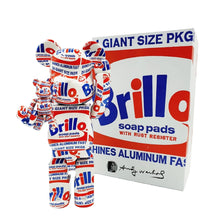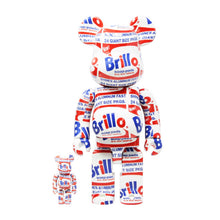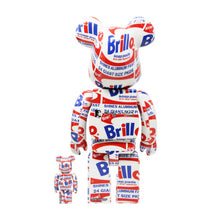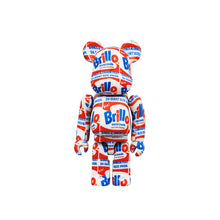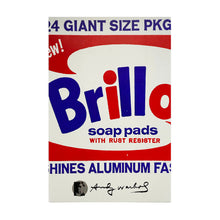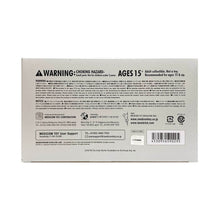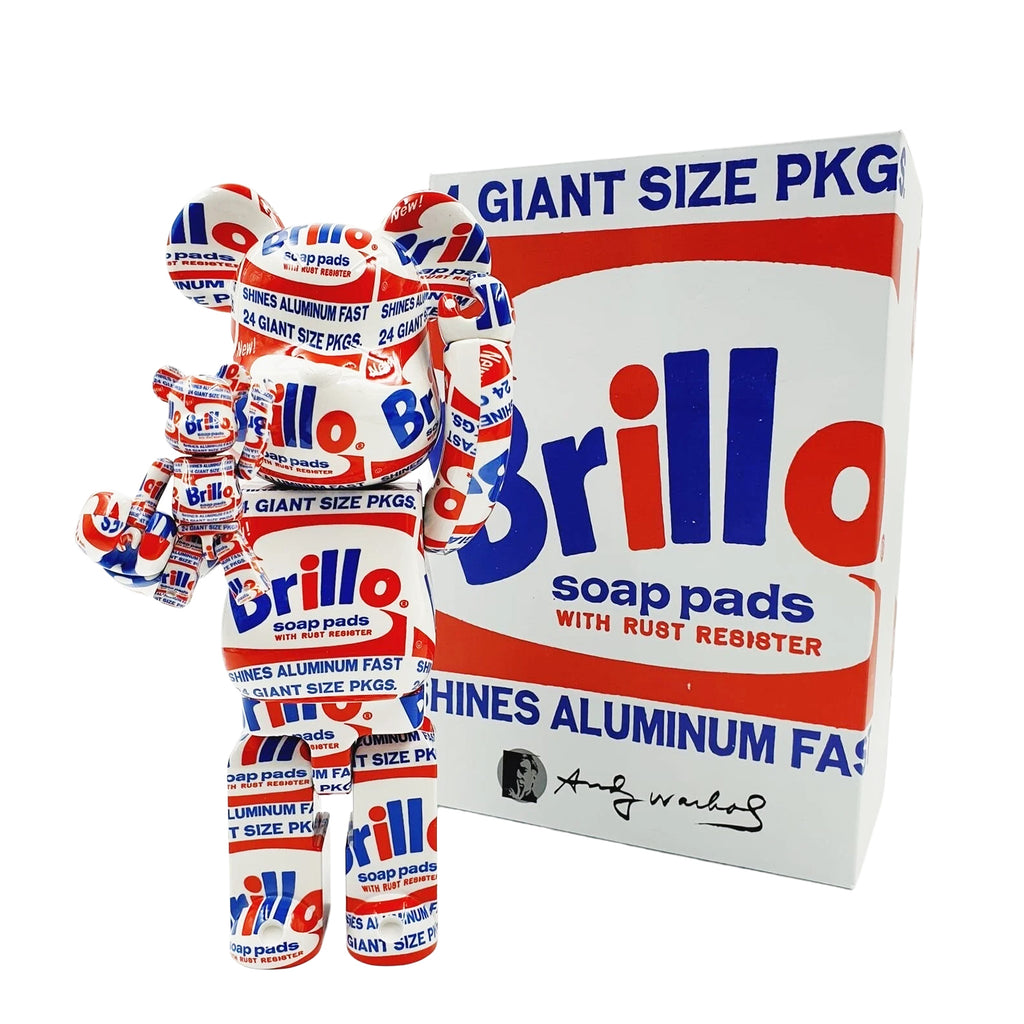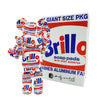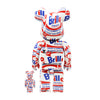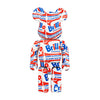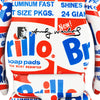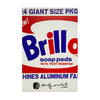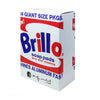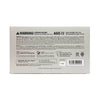'Brillo Box' by Andy Warhol, 2020
Limited Edition figure set collab. with Be@rbrick x Medicom Toy.
Officially licensed figure by The Andy Warhol Foundation.
Based on the artist's revolutionary wood box sculptures from 1964.
400% figure (11 Inches tall) +
100% figure (2.8 Inches tall)
11.8 x 7.9 x 4.7 Inches (box)
Collectible hydro-dipped vinyl art figure set.
Limited Edition (Sold Out).
Andy Warhol's signature printed on figure reverse and box.
New in original, unopened box.
Tamper-proof Medicom Toy hologram decal on reverse.
ABOUT THE ART
In the mid-1960s, Andy Warhol carried his consumer-product imagery into the realm of sculpture. Calling to mind a factory assembly line, Warhol employed carpenters to construct numerous plywood boxes identical in size and shape to supermarket cartons. With assistance from Gerard Malanga and Billy Linich, he painted and silkscreened the boxes with different consumer product logos: Kellogg’s corn flakes, Brillo soap pads, Mott’s apple juice, Del Monte peaches, and Heinz ketchup. The finished sculptures were virtually indistinguishable from their cardboard supermarket counterparts.
Warhol first exhibited these at the Stable Gallery in 1964, cramming the space with stacked boxes that recalled a cramped grocery warehouse. He invited collectors to buy them by the stack, and, though they did not sell well, the boxes caused controversy.
In reference to his boxes, Warhol later said that he “wanted something ordinary,” and it was this mundane, commercial subject matter that infuriated the critics. The perfectly blank “machine-made” look of Andy Warhol’s boxes contrasted sharply with the gestural brushstrokes of abstract expressionist paintings.










